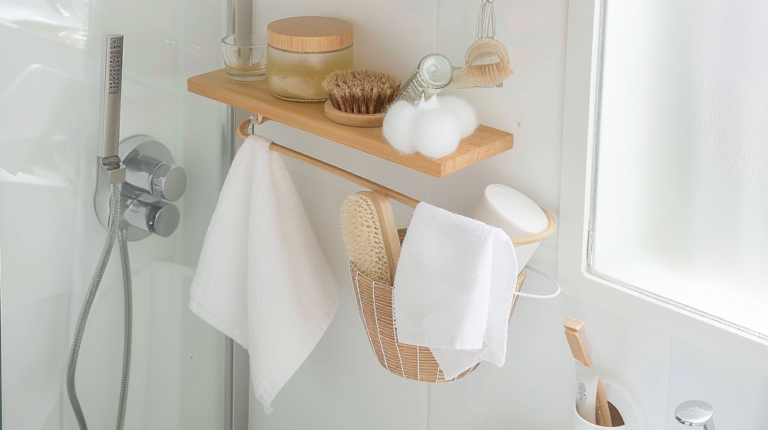Building an Eco-Friendly Home Office
Many rental homes are becoming multipurpose places where business and personal life converge due to the growth of remote work. This change offers opportunities as well as obstacles for environmentally aware renters. How can we make a home office sustainable and functional, considering the limited space and rental restrictions? You can create an eco-friendly workstation that boosts productivity without increasing your carbon footprint by emphasizing energy efficiency, renewable materials, and multipurpose design.
Recognizing the Environmental Impact of Home Offices
Although working from home already lowers emissions from commuting, additional environmental factors to take into account are:
- Inner consumption: climate control, lighting, and computing equipment
- Resource use: office supplies, paper, and ink
- Electronic waste: Disposable peripherals and outdated technology
- Indoor air quality: Off-gassing from furniture and equipment
- Space heating/cooling: Preserving comfort in a designated area
Sustainable Workstations with Optimized Space
Limited space necessitates innovative solutions.
Multipurpose Furnishings
- Desks that can be folded up when not in use
- Multipurpose items that can be used for both home and professional purposes
- To optimize floor space, use vertical storage
- Modular parts that can be adjusted to meet changing needs
With a small footprint that is ideal for small apartments and essential workspace storage, the FURINNO Efficient Home Laptop Notebook Computer Desk provides an environmentally friendly work surface made from recycled composite wood with non-toxic paint. It is perfect for renters who move around a lot because of its lightweight construction and tool-free assembly.
Installation That Is Rental-Friendly
- Tension-mounted room dividers to create visual separation
- Wall organizing using Command Strips and hooks
- Freestanding shelving as opposed to units that are fixed to the wall
- To delineate the borders of a workspace, use area rugs
Home Office Technology Energy Efficiency
Use these tactics to address the area with the largest environmental impact:
Selection of Equipment
- Computers and displays certified by ENERGY STAR
- Laptops are up to 80% more energy efficient than desktop computers
- Instead of using lasers, inkjet printers use less energy
- In order to prevent phantom energy draw, smart power strips
Techniques for Power Management
- All devices should have sleep/hibernate modes enabled
- Set up procedures for shutting down equipment during non-work hours
- Arrange workstations to optimize natural light
- Use task lighting rather than full room illumination
Management of Sustainable Supplies
Minimize the impact of consumables on the environment.
Techniques for Paper Reduction
- By default, note-taking and documenting are done digitally
- When signing, use digital tools rather than paper
- When using paper, use two-sided printing
- Establish an electronic reference material filing system
Selection of Eco-Friendly Supplies
- Mechanical pencils and refillable pens
- Remanufactured ink cartridges
- Post-consumer recycled paper goods
- Compostable or biodegradable office supplies
Aspects of Air Quality
Longer hours spent in one area are common in home offices.
Purification of the Air by Nature
- Choose houseplants that filter air and are appropriate for indoor environments
- Select low-VOC office equipment and furniture
- Open windows sometimes to allow for air exchange (weather permitting)
- Choose natural air fresheners instead of artificial ones
Appropriate Air Quality Enhancements for Rentals
- Removable weather stripping to enhance ventilation control
- Portable air purifiers that travel with you
- Frequent maintenance of computer fans and air intakes
- Use of portable, energy-efficient equipment for humidity control
Sustainability and Ergonomics
The relationship between environmental responsibility and health:
Eco-Friendly Ergonomic Options
- Recycled or renewable materials are used to make furniture
- Components that can be adjusted to accommodate various users (for shared areas)
- High-quality parts that last several movements
- Modular systems that may expand or contract to meet evolving requirements
Handmade Ergonomic Modifications
- Repurposed household objects as monitor stands
- Lumbar support with rolled towels
- Footrests with books when necessary
- Height-adjustable table surfaces
Practices for Digital Sustainability
Make your internet work less carbon-intensive:
- Manage email subscriptions to save server power
- Save files locally to reduce the load on cloud servers
- Shut down unused tabs and apps in the browser
- Reduce the bandwidth by optimizing the video call settings
Considerations for Shared Space
For people who labor in areas that have several uses:
- Design storage options that hide work materials during off-peak hours
- Establish portable work kits that are simple to assemble and disassemble
- Establish clear visual indicators for “work mode” versus “home mode”
- Put noise management techniques into practice for peaceful coexistence
Renters can establish ecologically conscious workspaces that honor lease agreements and planetary boundaries by carefully implementing these sustainable home office strategies. Regardless of your present or future living circumstances, the most effective strategies place an emphasis on energy efficiency, versatile design, and portable solutions, enabling you to work efficiently while upholding your commitment to sustainability.




